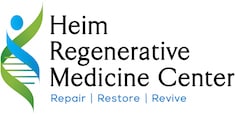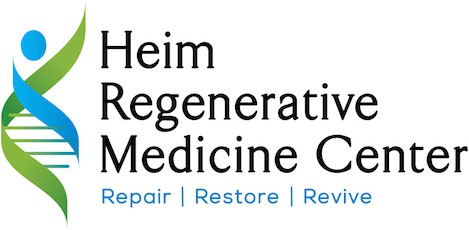There is likely not a single nutrient that has been studied more than Vitamin C. Vitamin C is considered an essential nutrient, meaning you must get it from your diet because the body cannot make it in order to meet its needs for good health. It is a potent antioxidant which means it protects molecules such as protein, fats, and probably most importantly, DNA, from damage. Damaged DNA has the potential to cause cancer and accelerate the aging process. This damage can be caused from oxidants created through normal metabolism and exposure to toxins and pollutants such as cigarette smoke and some chemotherapy drugs. Protecting fats such as LDL cholesterol from being oxidized is important as the oxidized form of this “bad” cholesterol is instrumental in causing plaque buildup in our blood vessels which is the leading cause of heart disease and death in the US.
Vitamin C is also crucial in the creation of collagen, neurotransmitters (think feel-good hormones), and white blood cells that protect us from infection, cancer, and many other potential assaults on our health and wellbeing. Interestingly, many animals create their own Vitamin C and do so in large volumes when they become ill. Humans must get it from food such as fruits and vegetables, particularly citrus fruits among others. Vitamin C is distributed to many different tissues in the body but is most highly concentrated in the brain and our adrenal glands. In fact, when we are running low, the brain takes precedence over the rest of the body for Vitamin C. This should give you a clue about how important this nutrient is.
Vitamin C levels are inversely related to body fat. Rat studies have revealed that rats fed a high calorie, high fat and high sugar diet along with vitamin C supplementation gained less weight than those that did not receive extra vitamin C. Human studies have shown that higher vitamin C levels are associated with higher fat oxidation (fat burning) during exercise compared to those with lower levels. These studies suggest that you may burn more fat during exercise when Vitamin C is optimal, especially in those that are overweight or obese.
Currently the RDA for Vitamin C depends on age, and averages around 60 mg per day. If you have chronic illness, are a smoker, or are pregnant or breastfeeding, those recommendations can be double that average. Athletes and those who are obese also require higher intake. The issues as always with the RDA are that the recommendations are based on minimum levels to prevent disease, particularly scurvy. A study that reviewed 14 different studies revealed intake of around 450 mg per day (7.5 X higher dose than the RDA) markedly reduced the risk of all causes of death including heart disease, cancer, and diabetes.
Oral vs. Liposomal vs. Intravenous Vitamin C and Plasma Levels
Oral bioavailability is dose and frequency dependent. This means that your body will only allow plasma concentrations to go so high with a single dose before excreting the excess in the urine. However, maximum plasma concentrations increase until you reach a 3000 mg single dose. Plasma levels return to baseline within 24 hours after a single dose. More frequent higher doses throughout the day (2 – 3 grams) will keep those levels 4 – 6 times higher over 24 hours vs a single dose. These studies reflect taking a typical oral capsule or tablet.
Liposomal Vitamin C, which is a form of Vitamin C that is attached to a type of fat that increases absorption, has been shown to increase plasma levels by up to 70% higher than the standard capsule or tablet and keeps levels elevated longer.
Intravenous (IV) Vitamin C (delivered through an IV) bypasses the limits of bioavailability and allows for plasma levels to reach 30 to 70 times higher than the same dose given orally.
IV Vitamin C has gained traction in the clinical setting, particularly in patients with Sepsis, a life-threatening condition due to the body’s overreaction to infection. In recent smaller studies of ICU patients with sepsis that were given IV Vitamin C along with other standard treatments, those patients had a much lower death rate (8 % vs 40%) compared to patients treated with only standard treatments. They also spent less time in the ICU and in the hospital overall than the standard treatment group.
Inflammation, the body’s natural response to injury and illness is probably the number one factor in accelerated aging and disease. The problem in our world today is that “injury” includes many of the foods we tend to eat, hormones we tend to over-produce during stress and poor sleep, and the numerous hormones and inflammatory chemicals excreted from the excess fat that most Americans carry around. Vitamin C is a crucial antioxidant that helps to control inflammation. Research in this area has demonstrated that it can lower CRP levels (C-reactive protein – a marker for inflammation and heart disease) by more than 25% compared to control groups taking a placebo.
This has been well-studied in its possible role in fighting cancer. The mechanisms include inhibiting glucose uptake into cancer cells and, when absorbed by cancer cells, Vitamin C can cause oxidative stress inside the cells that can lead to cell death. Vitamin C does this by causing hydrogen peroxide buildup in cells. In normal human cells, hydrogen peroxide is easily converted to water and oxygen. However, cancer cells lack the enzyme (catalase) required for this conversion. Additionally, a certain form is absorbed into cancer cells by the same receptor as glucose. In some cells, those transporters are more likely to absorb this form of vitamin C over glucose, creating a competition for the very fuel most cancer cells require for survival and growth. The higher the concentration of vitamin C in the plasma, the more competition there is for these receptor sites. It has not been found to be an effective monotherapy against cancer however, studies have shown more reduction in tumor size when given with traditional treatment vs. traditional treatment alone. Patients given Vitamin C along with traditional treatments have also been found to tolerate those treatments with less side effects.
We carry multiple forms in our clinic including Ester C – an oral form that has higher bioavailability than a typical tablet or capsule, and Liposomal C. I would recommend these forms for oral supplementation. A dose of 500 – 1000 mg twice a day would be a good dose to get a higher protective effect than what you would get from the RDA. We also provide the IV form in our nutritional IV room. Our IVs range from our Mini IV that contains 2.5 grams (2500 mg), our Meyer’s Cocktail that contains 10 grams and our high dose drips that contain 25 – 50 grams.
Hopefully this will give you a better understanding of this vital nutrient that is essential for life and vitality. Call the office for more information on your options for supplementing this vital nutrient.
Until next time, Stay Healthy and Live Well,
Dr. Mike


No Comments